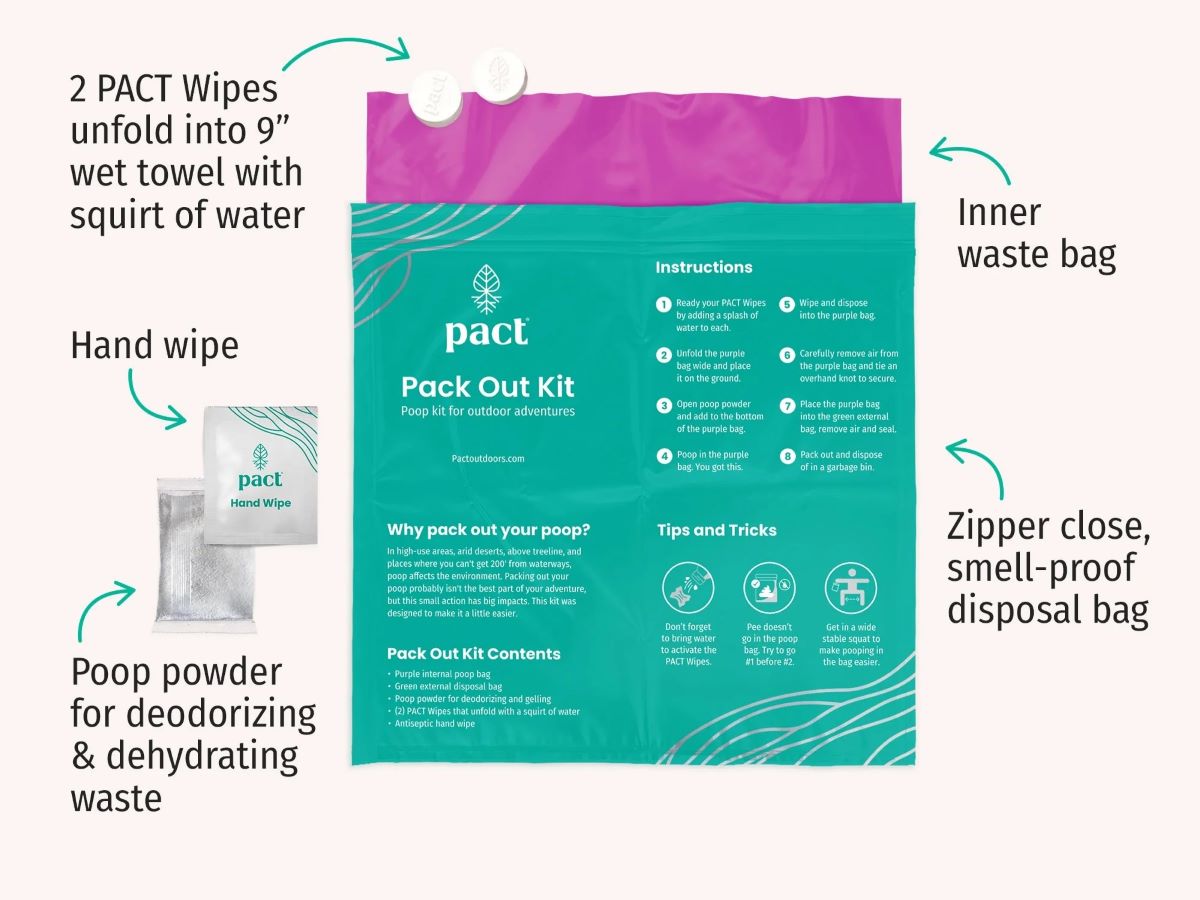Anyone who has hiked or run on one of Colorado’s 54 fourteeners — mountains over 14,000 feet high — knows that many of them are incredibly popular and, due to their height, have trails that spend a significant portion of time in a fragile, above-treeline alpine environment. And when you have a lot of people traveling above treeline, you’re bound to have a poop problem. Nearly every mountain runner has a story of encountering an unexpected pile of human feces and toilet paper in an unexpected location.
The question on the Colorado 14ers wasn’t whether there was a poop problem or not, but how big of a problem it was, as well as what could be done about it. To study the issue, the Colorado Fourteeners Initiative, Leave No Trace, and researchers from Penn State University partnered with PACT, a company making all-in-one bathroom kits that make it easy to carry human waste out of the backcountry, to assess hiker behavior on one of the most popular mountains in Colorado and the state’s highest: Mount Elbert. The questions they sought answers to included how many people pooped on the mountain, how many carried out their poop, and were people open to carrying out their poop if given an easy system to do so.
The study installed a kiosk at the Mount Elbert trailhead and provided free Pack Out Kits from PACT, as well as a disposal bin for used ones. A researcher stationed themselves at the trailhead to interview trail users on their pooping habits, knowledge of proper human waste disposal, and their use of the provided kits.
As it turned out, the study found that about 11% of the people visiting the mountain pooped while there, but only 30% of those used the vault toilet at the trailhead. That meant that a little more than 7% of the 15,000 trail users per year on Mount Elbert alone were pooping somewhere on the mountain. That equates to more than 1,100 poops per year, presumably many in the high alpine ecosystem.
Penn State researcher Shari Edelson said, “With so many people pooping on the trail rather than in facilities located at trailheads, we can minimize our environmental impacts by making plans to dispose of our waste properly.” The study found that when provided with the Pack It Out Kits, 30% of hikers used them if they needed to poop, and of those, 79% said that after using one, they’d be more likely to use one in the future.
Edelson went on to say, “The study showed that people are willing to do this but aren’t fully prepared with the supplies they need. Educating hikers and introducing them to the tools that help get the job done are two keys to helping them take action.” PACT Outdoors Co-Founder Jake Thomas says, “The 14ers are a great starting point or test case for this because of their high use and sensitive ecosystems. But, there are many areas … that would benefit from this type of strategy.”
Of course, this isn’t just a problem on the highest peaks of Colorado — it’s an issue plaguing all high-use wilderness areas. While river users understood the scope of the poop problem long ago, and started requiring the use of portable toilet systems on many rivers, the foot-based community has been slow to adopt the practice of carrying poop out. Some popular backpacking areas, including the Grand Staircase Escalante National Monument in Utah and Chicago Basin in the San Juan Mountains of Colorado, already require people to pack out human waste, but it’s not a common practice in most areas.
The poop problem in these pristine places isn’t necessarily one of lack of care but one of lack of education. Thomas says, “We need approaches to stewardship problems in the outdoors that treat users as an integral part of the solution rather than passive recipients of information. Our goal now is to publish the research and find partners to support us in expanding the program and study its impact at scale.”
“The key is forming partnerships with land managers and/or trail organizations to fund and support this larger scale implementation.” Thomas goes on to emphasize, “The idea and thing we’ve found is that if we share this research far and wide, the people who benefit from it the most will find us.”
Hopefully, given more education and more resources, trail runners of the future will no longer be surprised by the pile of white toilet paper in the woods that screams, “Watch your step!”
Call for Comments
- Do you think there is a similar problem in your local mountains or wilderness area?
- Would you use a Pack Out Kit or other portable human waste removal system if provided?
- Are you already using backcountry areas where packing out human waste is required?



